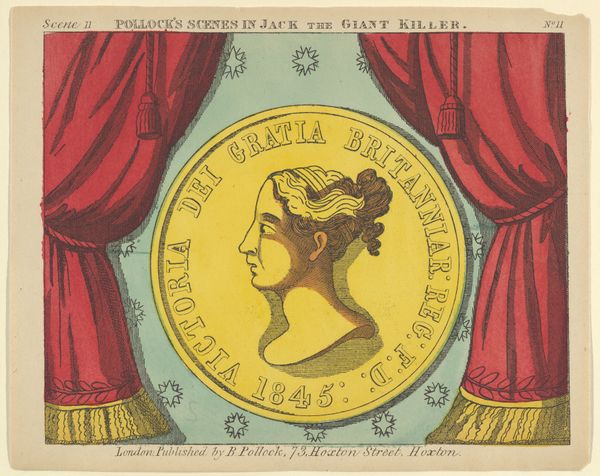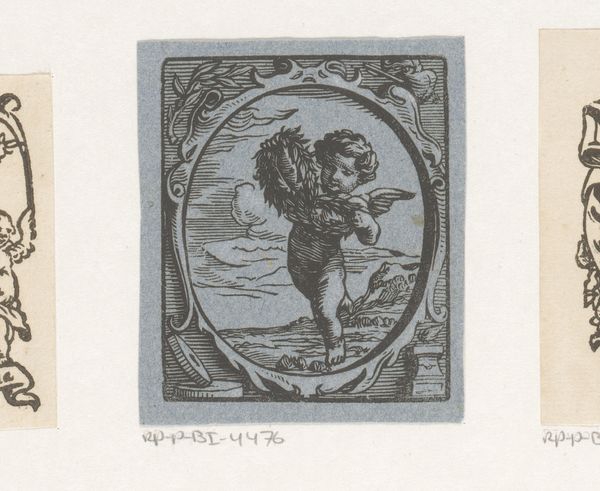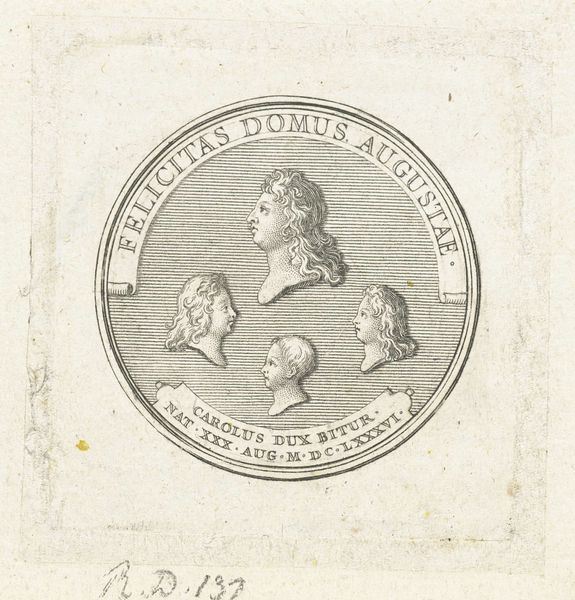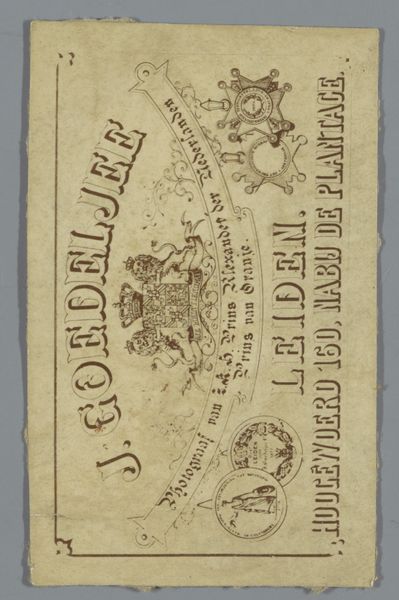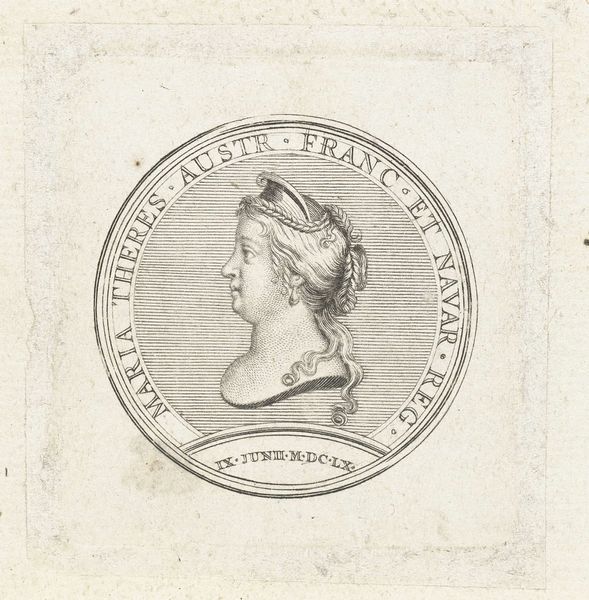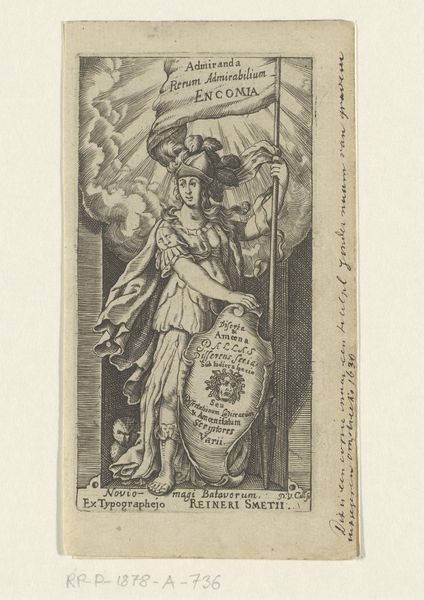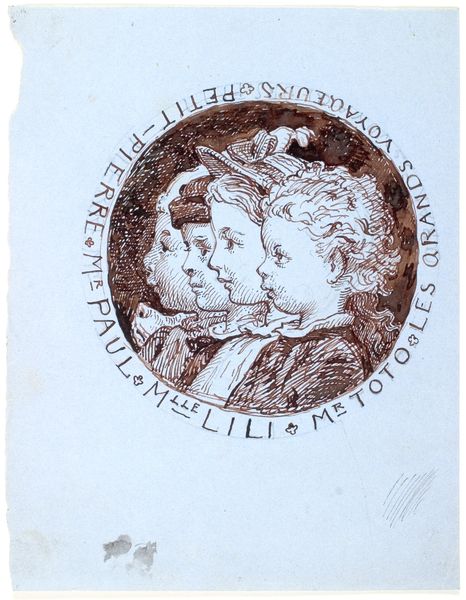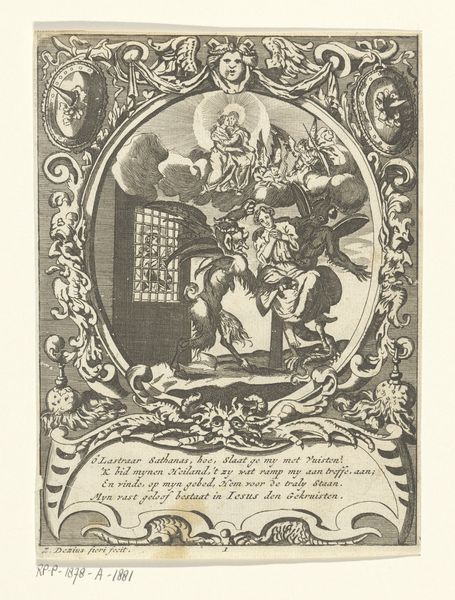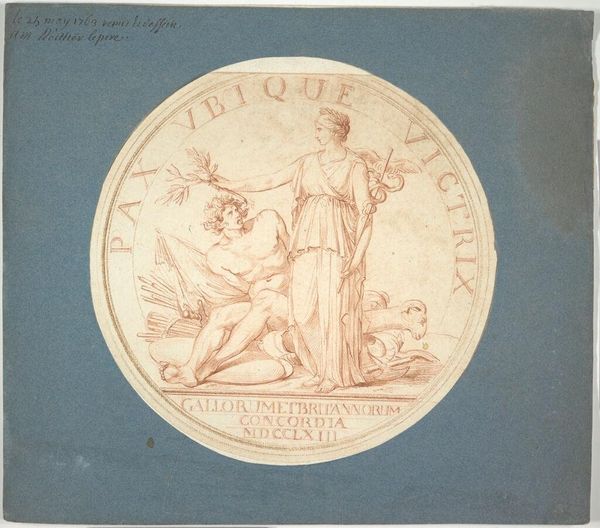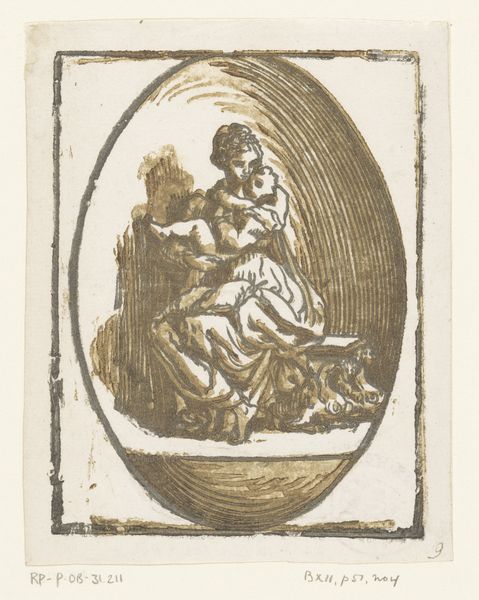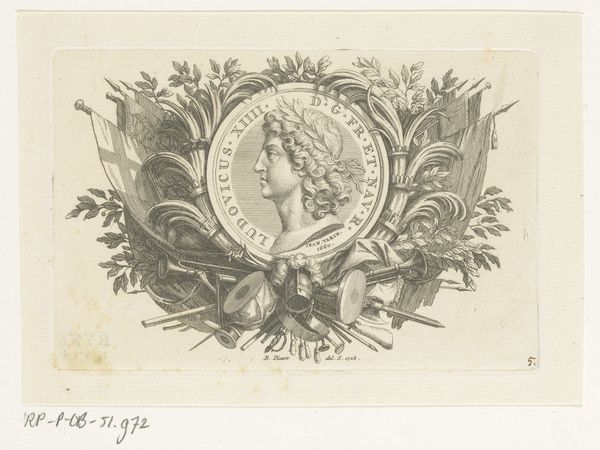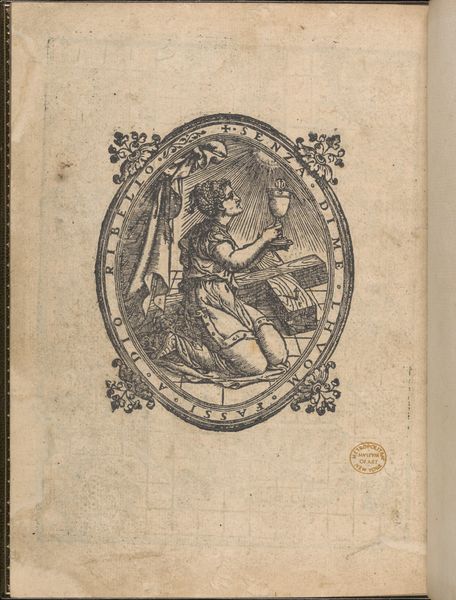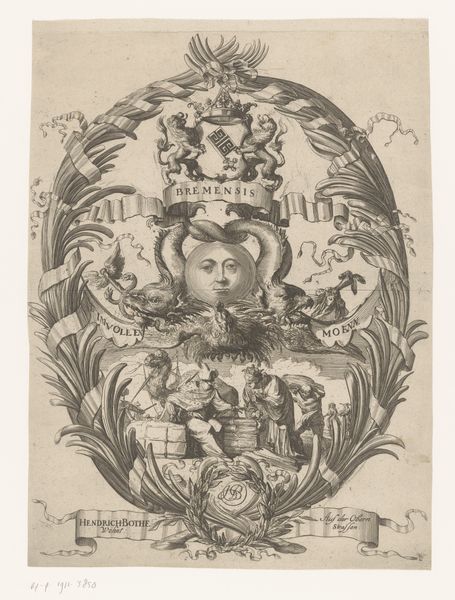
Ecuador, 2 Reals, from the series Coins of All Nations (N72, variation 1) for Duke brand cigarettes 1889
0:00
0:00
Dimensions: Sheet: 2 3/4 x 1 1/2 in. (7 x 3.8 cm)
Copyright: Public Domain
Curator: The piece before us, created around 1889 by W. Duke, Sons & Co., is titled "Ecuador, 2 Reals, from the series Coins of All Nations." It’s a colored pencil and print advertisement, part of a larger promotional campaign for Duke brand cigarettes. Editor: My first impression is just how bizarre this image is – this odd, almost grotesque caricature of a miner literally carrying an Ecuadorian coin. The disproportion of the body is unsettling but also humorous, and it has a definite energy to it. Curator: Exactly. Let's think about the materials and the method of production. The choice to create these promotional cards using colored pencil and print highlights the mass production techniques of the time. It democratizes artmaking, turning it into an easily reproducible commercial endeavor linked to consumerism. We're also looking at the intersection of art, marketing, and the rise of the tobacco industry. Editor: I think it also offers an important insight into global economics. It’s advertising tobacco using an Ecuadorian coin – speaks volumes about exploitation, extraction, and the dynamics of global capitalism in the 19th century, wouldn’t you agree? The figure appears to be weighed down by the burden of the currency itself. Curator: Certainly. The series objectifies an entire nation. By depicting a generic worker supporting that nation's currency as caricature it becomes a method of constructing a commercial market. And it shows us something of how consumers were trained. We're essentially looking at the birth of globalized branding. Editor: I’d add that, in terms of identity and representation, the card perpetuates stereotypes – it orientalizes Ecuadorian culture by focusing on the exoticism of foreign currency and labor. The miner almost disappears into the background while he serves his economic role in the foreground. Curator: Precisely. Seeing how artistic and manufacturing methods meet social commentary provides us with many historical and economic clues about this particular intersection. Editor: Definitely, by juxtaposing material analysis with issues of identity and political context, this artwork opens a window into 19th-century marketing and globalized labor practices. Curator: Indeed, a brief glance at this little advertisement card becomes a doorway into so much material production!
Comments
No comments
Be the first to comment and join the conversation on the ultimate creative platform.
